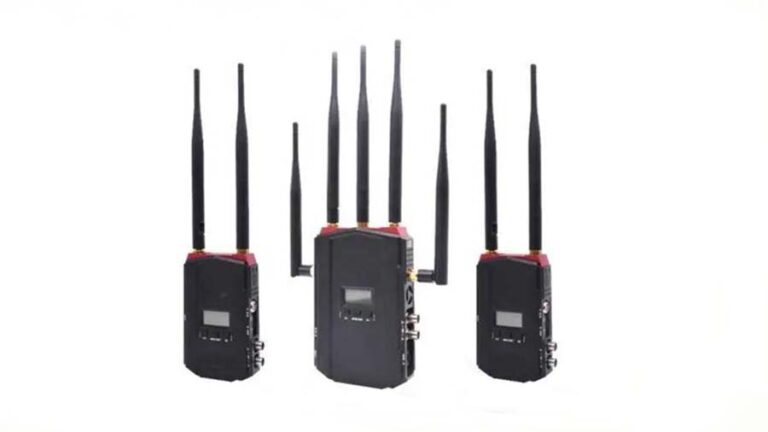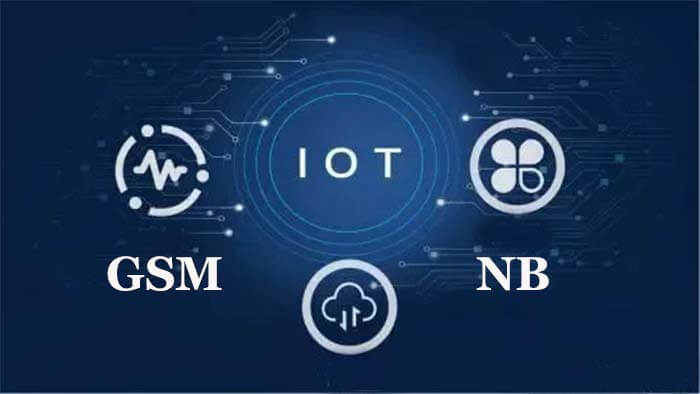This article is about the comparison of 5.8GHz vs. 2.4GHz vs. 1.2GHz in the wireless mapping industry, and what are the advantages and disadvantages of 5.8GHz, 2.4GHz, and 1.2GHz wireless mapping.
UAVs mainly use 1.2GHz, 2.4GHz, and 5.8GHz frequency bands for mapping.
2.4GHz and Wi-Fi belong to the same frequency band; 1.2GHz is a regulated frequency band, there is no 1.2GHz open amateur frequency band, only to provide the radio enthusiasts who have obtained the qualification certificate to use it legally; 5.8GHz is the frequency band the country divided into open amateur frequency band.
5.8GHz works less equipment and less interference, the high-frequency antenna can be more miniaturized, but the higher the frequency the higher the cost of electronic components, such as the antenna and other precision requirements are higher, more prone to heat, more sensitive to the magnet conductor close to the transmitter than the low-frequency, and to do high-power than low-frequency is more difficult.

5.8GHz in 5.8GHz vs. 2.4GHz vs. 1.2GHz in FPV Video System
This frequency band is the most widely used wireless microwave video transmitter in the field of aerial photography for the time being.
5.8GHz advantages:
Lightweight, low heat, long distance, and the price is very transparent, the channel can release a maximum of 32 optional. So far 5.8GHz is still the first choice in the field of aerial photography microwave map transmission.
Among the signal restrictions of the Ministry of Industry and Information Technology, the 5.8GHz microwave signal is a consumer-grade open band, which means that whether you are licensed or not, you can use the 5.8GHz signal as your aerial photographer’s picture transmission operation.
In terms of picture quality processing, a good 5.8GHz video transmitter can fully unleash the 64-bit analog color degree output. Some manufacturers have rated the band 5.8GHz as having the lowest impact in tests of environmental pollution, radiation to the human body, and interference with other wireless facilities.
5.8GHz Disadvantages:
Wavelength issues result in very poor penetration of this signal, which is susceptible to interference from external factors. The land-to-air conditions of aerial photography instead create empty environments, so the first thing the MIIT opened up was 5.8GHz to allow for use in consumer-grade products.
5.8GHz does not have a very exaggerated power, the actual power is basically ≤ 2000mW, that is, we often say 2 watts.
2.4GHz in 5.8GHz vs. 2.4GHz vs. 1.2GHz in FPV Video System
Still, the problem of cheapness leads to children’s remote control toys, TV remote controls, routers, and other everyday items being used in this band, the use of such transmitters is particularly susceptible to interference, that is, the picture coming out of the big snowflake points, frequency breaks, crosstalk and so on.
The 2.4GHz band is susceptible to temperature drift interference, which is the distorted background that can be seen when water vapor rises. Needless to say, the electronic components used in cheap products are primitive, unlike 5.8GHz and 1.2GHz which mainly use SMD and modular electronic components.
And 2.4GHz signal band video transmitters in the market rarely actually marked power products, with a few hundred milliwatts of modules for a large shell claimed to be 8 watts or 10 watts of high power.
So many users will find a 2.4GHz 8W high power transmission map is not as far as a 5.8GHz 600mw transmitter distance.
1.2GHz in 5.8GHz vs. 2.4GHz vs. 1.2GHz in FPV Video System
1.2GHz belongs to the low-frequency signal, the penetration force is very strong and can cover all the fields of wireless video transmission.
1.2GHz Advantages:
Wave frequency is the most coherent, most of the transmitters can handle the main and auxiliary two wave frequencies, higher than 2.4GHz signal transmission is equivalent to the surface of the sea again or shallow swimming, below 1.5GHz, is equivalent to the seabed, the surface of the sea and then the big waves, the seabed is still calm.
Known on the market 1.2GHz module can reach a maximum power of 8000mw, the image can be transmitted to deal with 64-bit image quality, and even higher, the transmitter itself and its tiny size can be an unlimited extension of the device function.
Most of the 1.2GHz signal transmitters are not affected by temperature phase drift, but microwave wireless video transmitters are the most suitable for land-to-land transmission.
1.2GHz Disadvantages:
1.2GHz is the earliest frequency band that the Ministry of Industry and Information Technology (MIIT) has strictly prohibited the use of airborne, but not including licensed civilian-grade products.
In China, the 1.2GHz band is still in service with the military and government agencies, and because the excessive power of 1.2GHz can cause peripheral wireless devices to malfunction, 1.2GHz is not available for sale as a consumer product.
5.8GHz vs. 2.4GHz vs. 1.2GHz, MIIT stipulates the use of radio frequency bands for drones

The Ministry of Industry and Information Technology (MIIT) has stipulated that the frequency bands of 840.5-845MHz, 1430-1444MHz, and 2408-2440MHz are to be used for unmanned aerial vehicle (UAV) systems under the use of spectrum in China.
- Use of frequency: 840.5-845MHz, 1430-1444MHz, and 2408-2440MHz.
- 840.5-845MHz can be used for uplink remote control of unmanned aerial vehicle systems. Among them, 841-845MHz can also be used for uplink remote control and downlink telemetry links of unmanned aerial vehicle systems in a time-division mode.
- 1430-1444MHz frequency band can be used for downlink telemetry and information transmission links of unmanned aerial vehicle systems, of which 1430-1438MHz frequency band is used for video transmission of police unmanned aerial vehicles and helicopters, and other unmanned aerial vehicles use 1438-1444MHz frequency band.
- The frequency band of 2408-2440MHz can be used as the backup frequency band for uplink remote control, downlink telemetry, and information transmission links of UAV systems. Relevant radio stations working in this frequency band shall not affect other legitimate radio services or seek radio interference protection.
- The channel configuration of the above frequency band, the transmit power of the radio equipment used, the limit value of unwanted emission, and the neighboring channel selectivity of the receiver shall comply with the relevant requirements.
The use of frequencies, the setting of radio stations, and the radio transmitting equipment used shall comply with the relevant provisions of national radio management and unmanned aerial vehicle system management.
Besides this 5.8GHz vs. 2.4GHz vs. 1.2GHz in FPV Video System article, you may also be interested in the below articles.
Internal Antenna VS. External Antenna
LTE Vs. 5G: Is 5G Better Than LTE?




